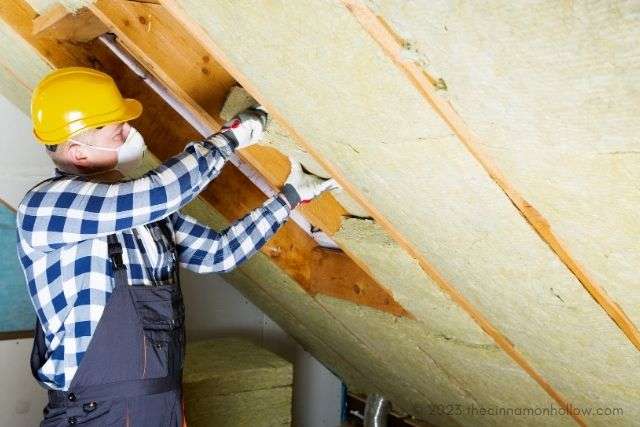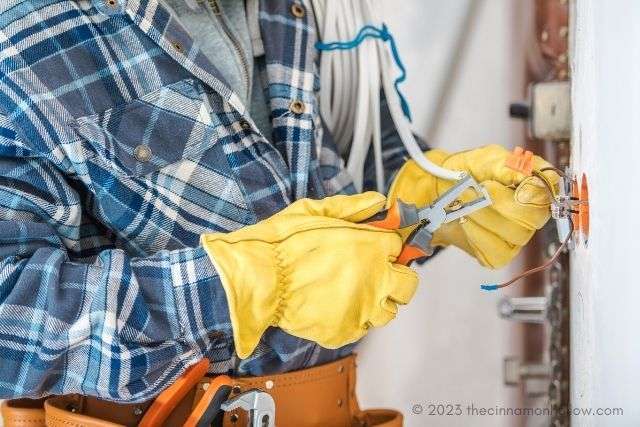As a homeowner, staying vigilant about the condition of your home’s insulation is paramount for maintaining comfort, energy efficiency, and reducing utility bills. Insulation is your silent defender against the seasons, working tirelessly to keep the cold out in winter and the heat at bay in summer.
In this article, we’ll explore the unmistakable indicators that it’s time to rejuvenate your home’s insulation.
Skyrocketing Energy Bills
If you’ve noticed a steady increase in your energy bills over the past few months, it could be a sign that your insulation is no longer performing as well as it should. Over time, insulation can become compacted or even disintegrate, leading to gaps and reduced efficiency in keeping the desired temperature inside your home.
As a result, your heating and cooling systems have to work harder to maintain the desired temperature, leading to higher energy bills. If you’re experiencing this issue, it might be time to consider replacing your insulation.
Uneven Temperature Distribution
Another tell-tale sign that your home’s insulation is no longer doing its job is uneven temperature distribution throughout your house. If you find that certain areas of your home are colder or warmer than others, it could be a sign that your insulation is compromised and not adequately regulating the temperature. This can lead to discomfort for you and your family, making it an important issue to address.
Visible Damage
Inspecting your home’s insulation regularly is crucial in identifying any potential issues. Look for signs of visible damage, such as holes, cracks, or moisture spots. These are all indicators that your insulation may need to be replaced.
Moisture can easily seep into the insulation and cause it to lose its effectiveness, which can lead to mold growth and potential health hazards. Additionally, damage from pests like rodents can also compromise the integrity of your insulation. If you notice any visible damage, it’s essential to address it promptly.
Drafts and Leaks
If you feel drafts or air leaks around your doors and windows, it could be a sign that your insulation is no longer creating an effective barrier against the outside elements. These openings can allow heat or cold air to escape, making your heating and cooling systems work overtime to compensate. Not only does this result in higher energy bills, but it can also cause discomfort and affect the overall temperature regulation in your home.
Age of Your Insulation
Finally, the age of your insulation is a significant factor in determining when it needs to be replaced. Most insulation materials have a lifespan of around 10-15 years, depending on climate and wear and tear factors. If your insulation is reaching or has exceeded this timeframe, it’s a good idea to have it inspected by a professional and consider replacing it if necessary.
Type of Insulation
The type of insulation in your home determines how effectively it performs over time and also influences when and why it may need replacement. Understanding the different types can help you make an informed decision about any necessary updates. Here’s a list detailing the most common types of insulation:
- Fiberglass: This type is made from fine glass fibers and is commonly found in batts, rolls, and loose-fill. It’s non-flammable and resistant to moisture damage, making it a popular choice for homeowners. However, it can settle over time and lose its effectiveness, especially if not properly installed or if it becomes damp.
- Cellulose: Often made from recycled paper products, cellulose insulation is eco-friendly and has great thermal properties. It is usually treated with chemicals to resist pests and fire but can be prone to settling and may require topping up after several years. Also, it can absorb moisture, so it’s crucial to ensure your home is well-sealed against water intrusion.
- Spray Foam: Spray foam expands to fill cavities in walls and ceilings, creating an airtight seal. It has a long lifespan and does not usually require replacement unless incorrectly applied. However, improper installation can cause gaps or overexpansion, necessitating repairs.
- Rigid Foam: Rigid foam boards are excellent for insulating exterior walls and basements due to their high insulating value per inch. They’re not susceptible to moisture or settling, but they need to be cut to fit the space accurately and can be more expensive than other options.
- Rock Wool: Also known as mineral wool, this insulation is made from rock fibers and offers excellent fire resistance and soundproofing. It is denser than fiberglass and doesn’t tend to settle, but it can be more costly and harder to install due to its rigidity.
Professional Installation vs. DIY
When considering insulation installation, homeowners have a choice: hire a professional or attempt a DIY approach. Professional installation generally ensures a comprehensive and safe upgrade, as experts have the expertise to choose the appropriate materials, understand building codes, and spot underlying issues, such as mold or structural damage.
Insulation contractors are also equipped with specialized tools for accurate and efficient installation, which is especially important for spray foam or when cutting rigid foam boards to size.
On the other hand, DIY installation can be cost-effective for those who are skilled and understand the intricacies of their home’s envelope.
However, improper installation can lead to gaps, compression, or insufficient coverage, rendering the insulation less effective and potentially requiring costly corrections.
Ultimately, it’s essential to weigh the costs and benefits of both options and choose what best fits your budget and skill level while ensuring the safety and effectiveness of your home’s insulation.
Maintaining Your Insulation
Once you have replaced or upgraded your home’s insulation, it’s important to maintain it regularly to ensure its continued effectiveness. Here are a few tips for keeping your insulation in top shape:
- Regularly inspect for any visible damage, such as holes or moisture spots.
- Keep an eye out for pests and take necessary measures to keep them away from the insulation.
- Seal any air leaks around doors, windows, and other openings to prevent outside air from entering and compromising the insulation’s effectiveness.
- Ensure proper ventilation in your attic to prevent moisture buildup, which can damage insulation and lead to mold growth.
- Consider adding additional insulation if you notice a significant change in temperature regulation or increased energy bills. This may be necessary if your home’s needs have changed or the current insulation has become damaged over time.
Conclusion
Insulation is a crucial component of any home, providing comfort, energy efficiency, and protection against the elements. However, over time, insulation can become damaged or less effective due to various factors.
Whether you choose professional installation or a DIY approach, maintaining your insulation is crucial for ensuring its longevity and effectiveness. Keep these tips in mind to make informed decisions about your home’s insulation and enjoy a comfortable living space year-round.
More articles you may enjoy:






